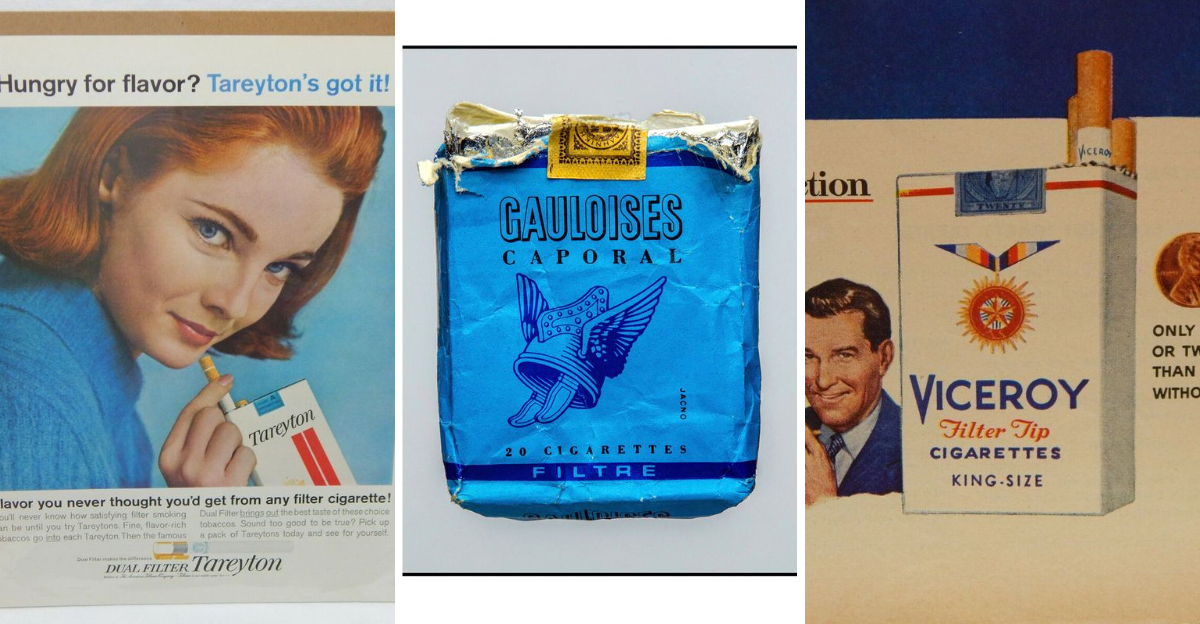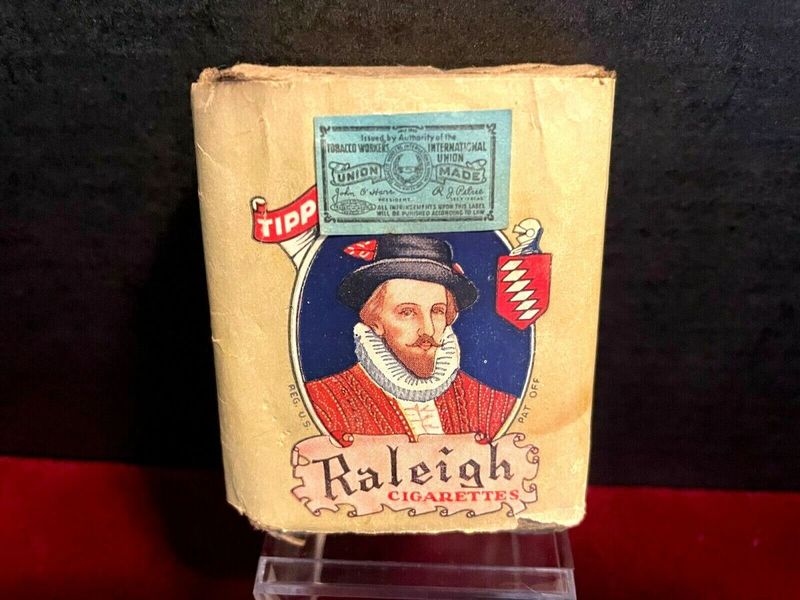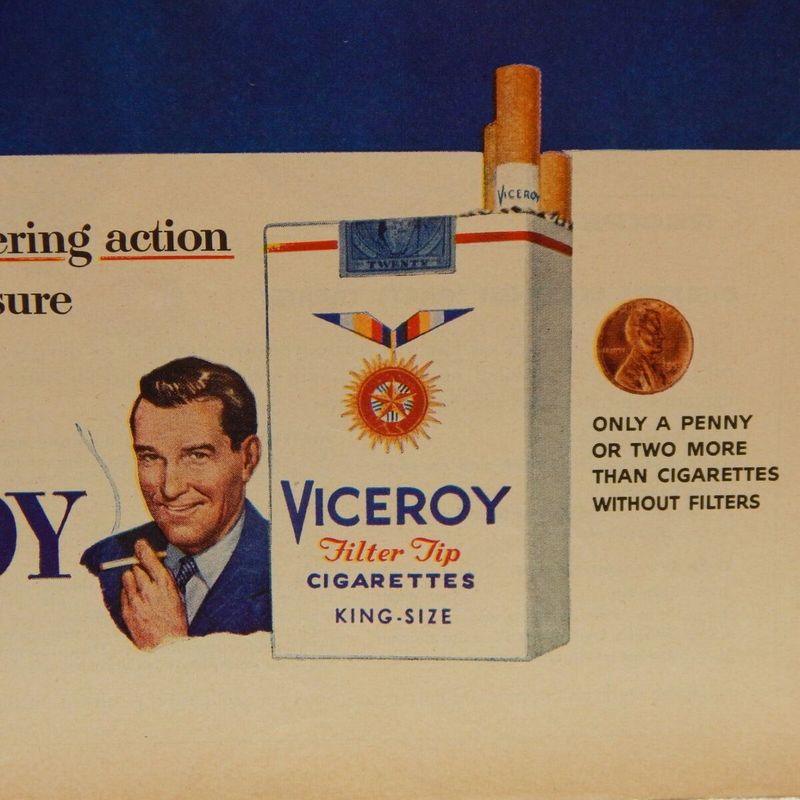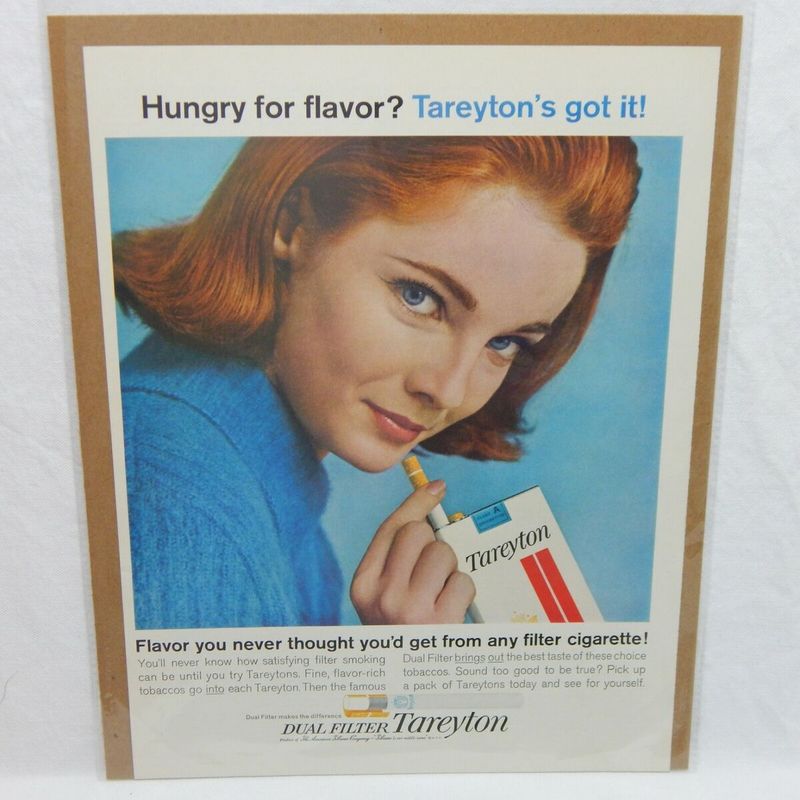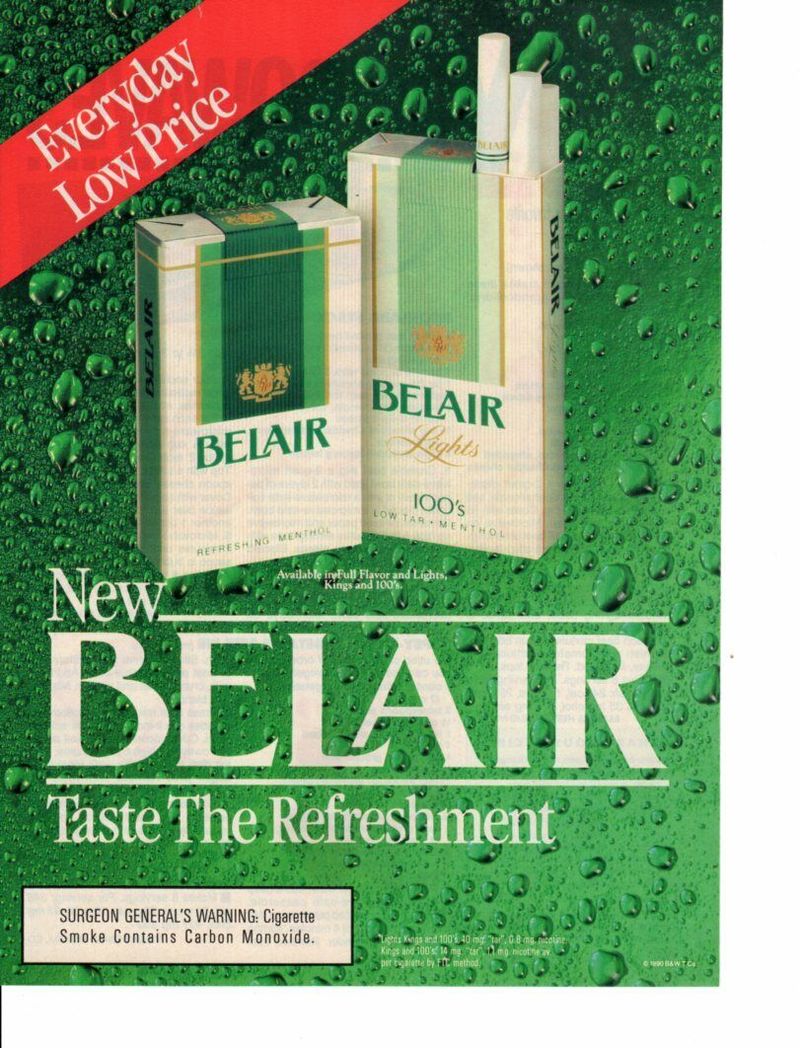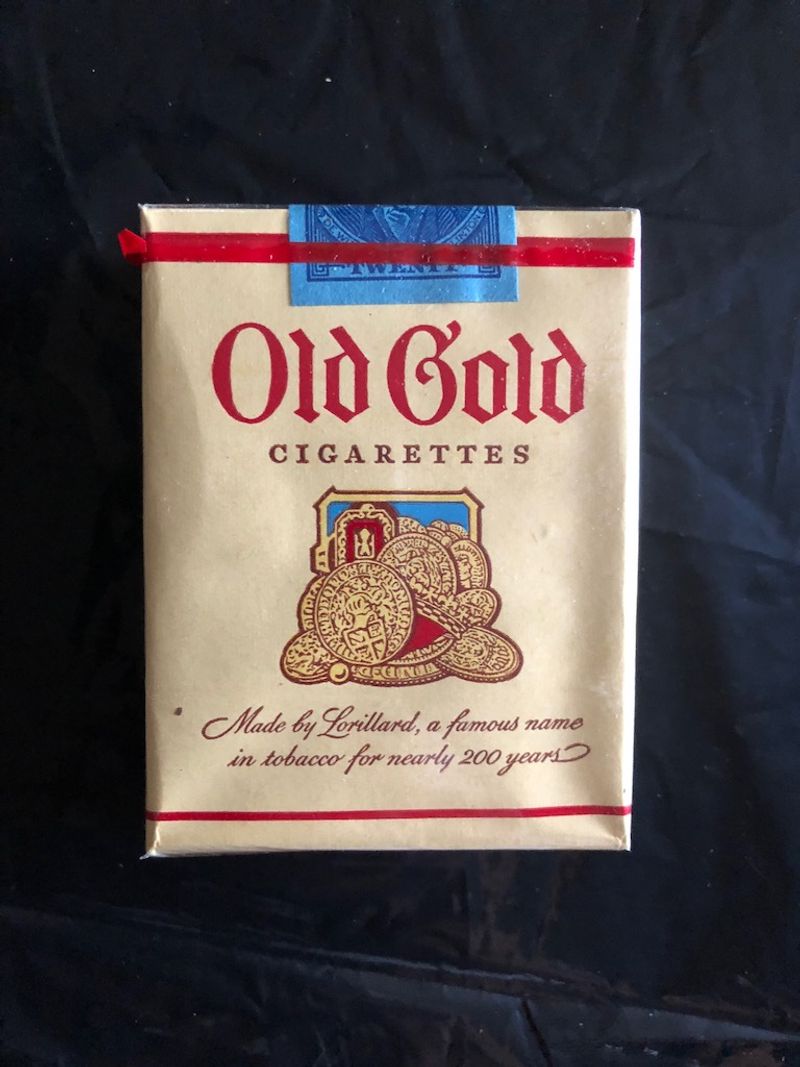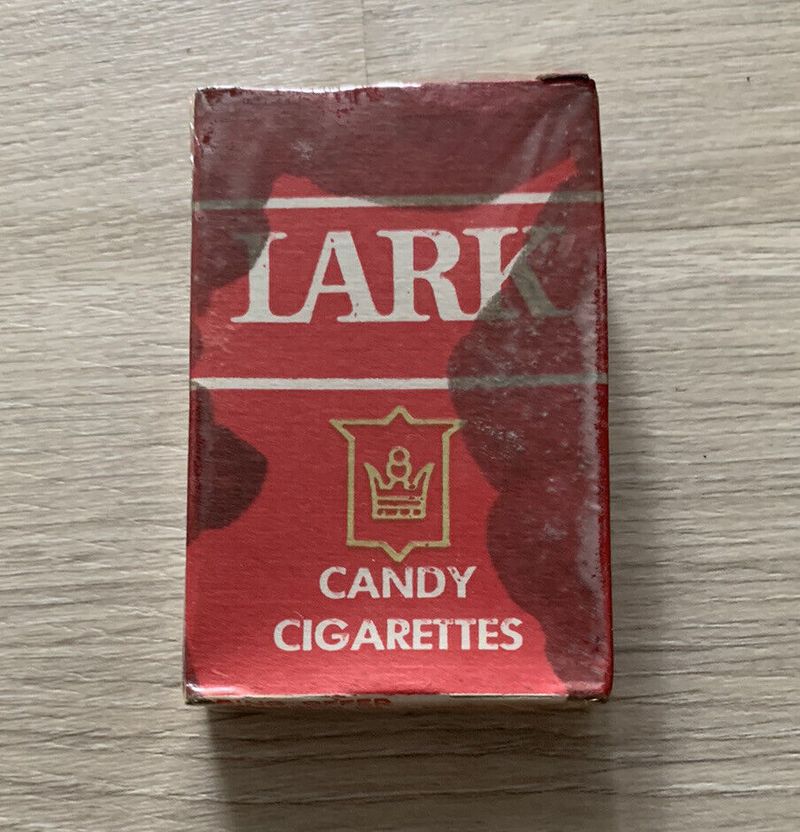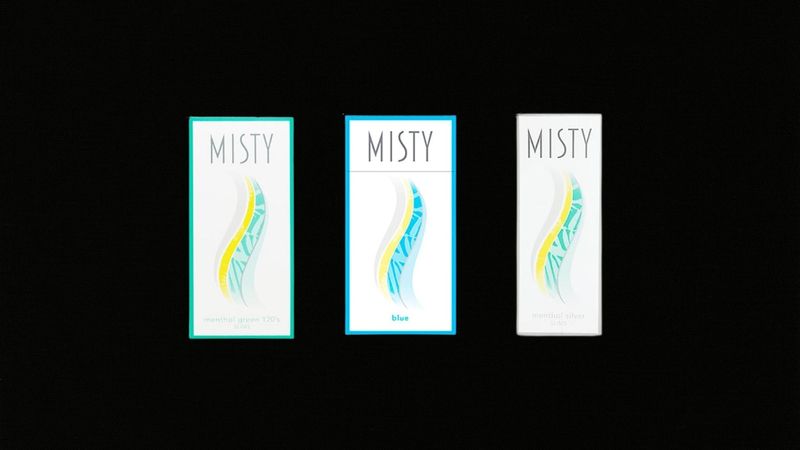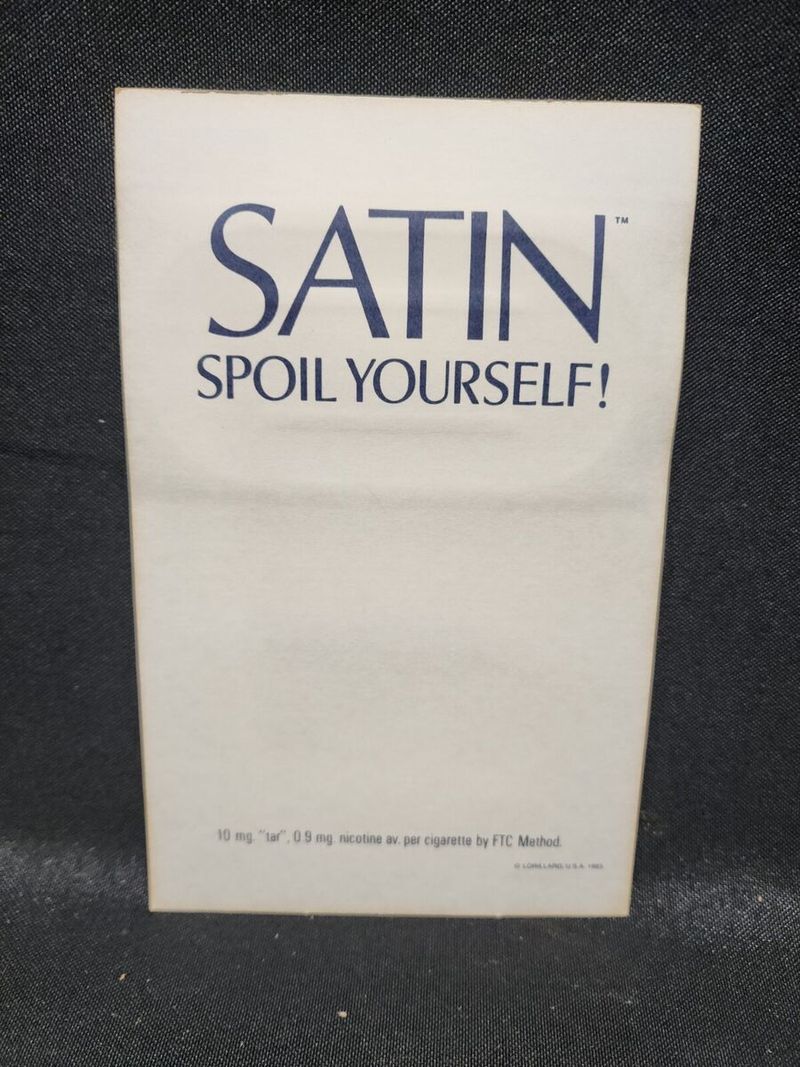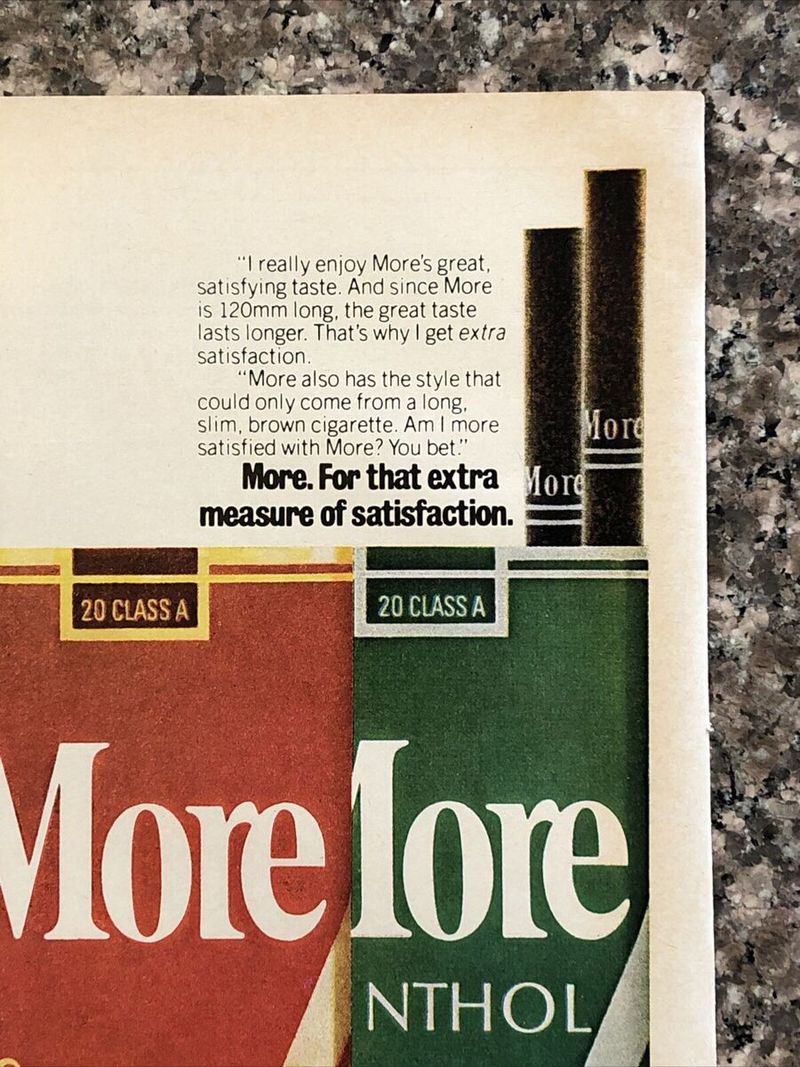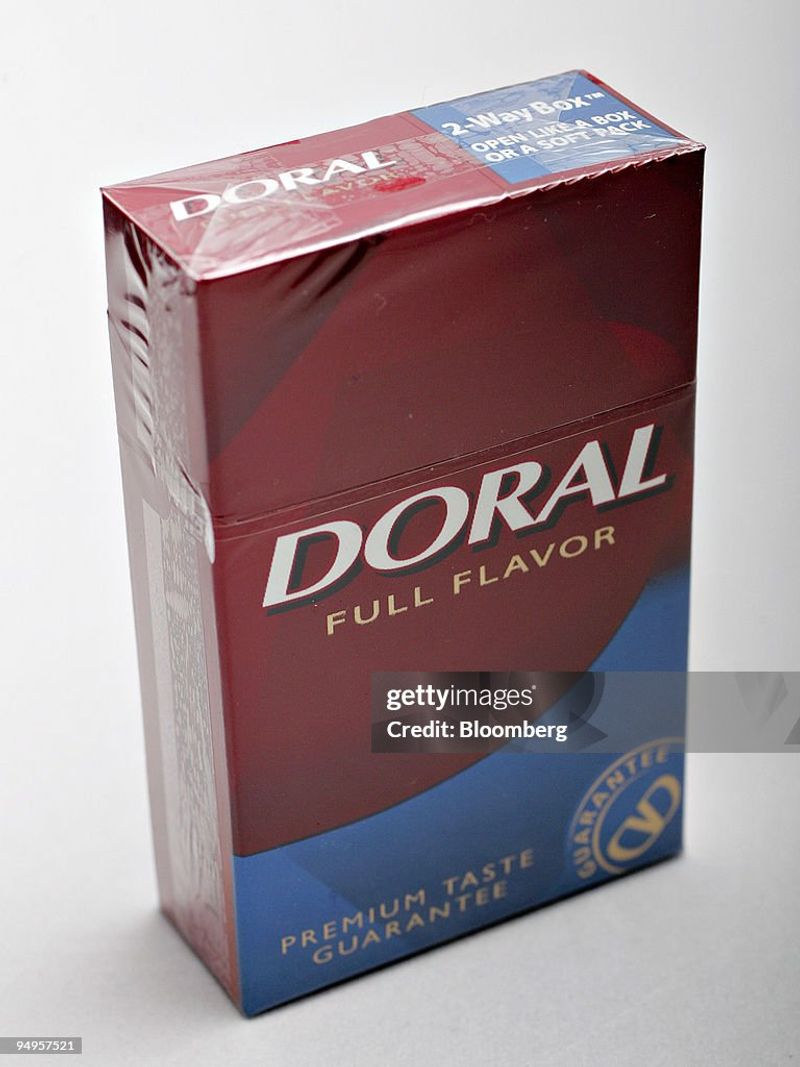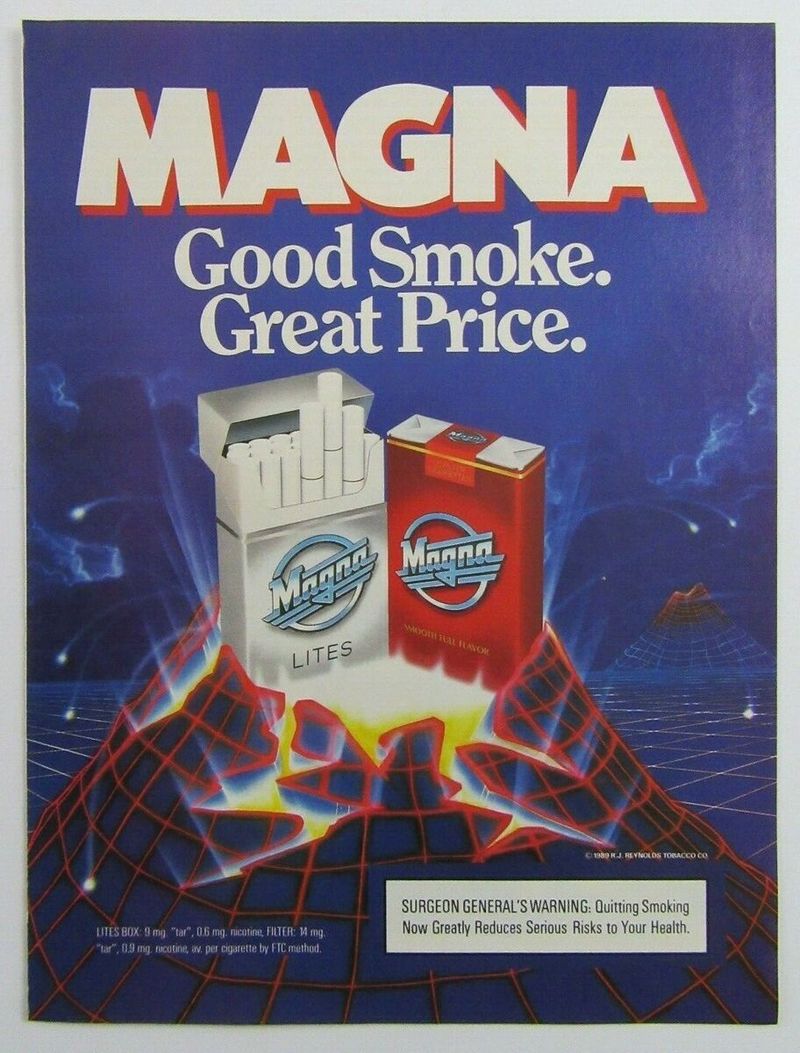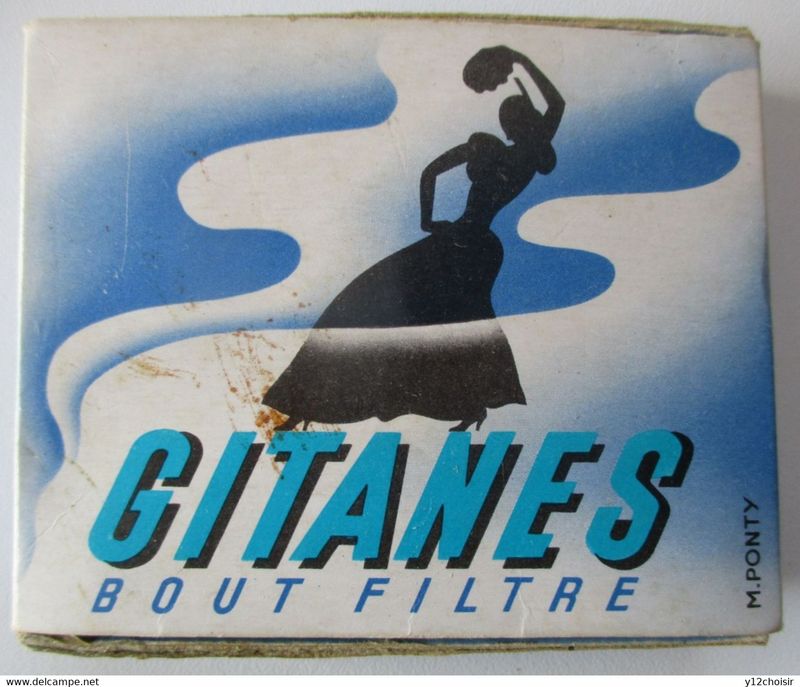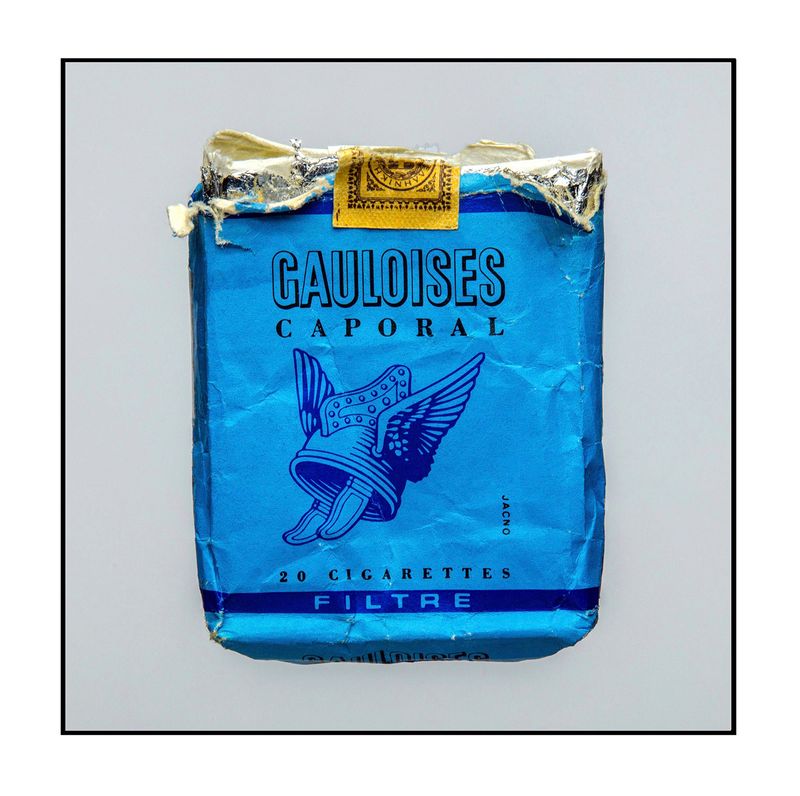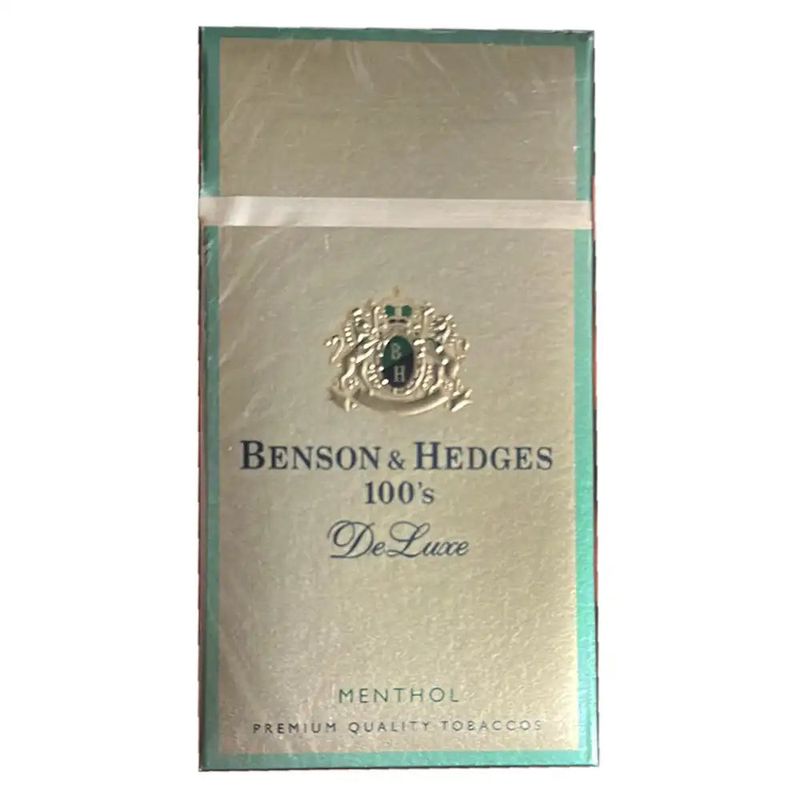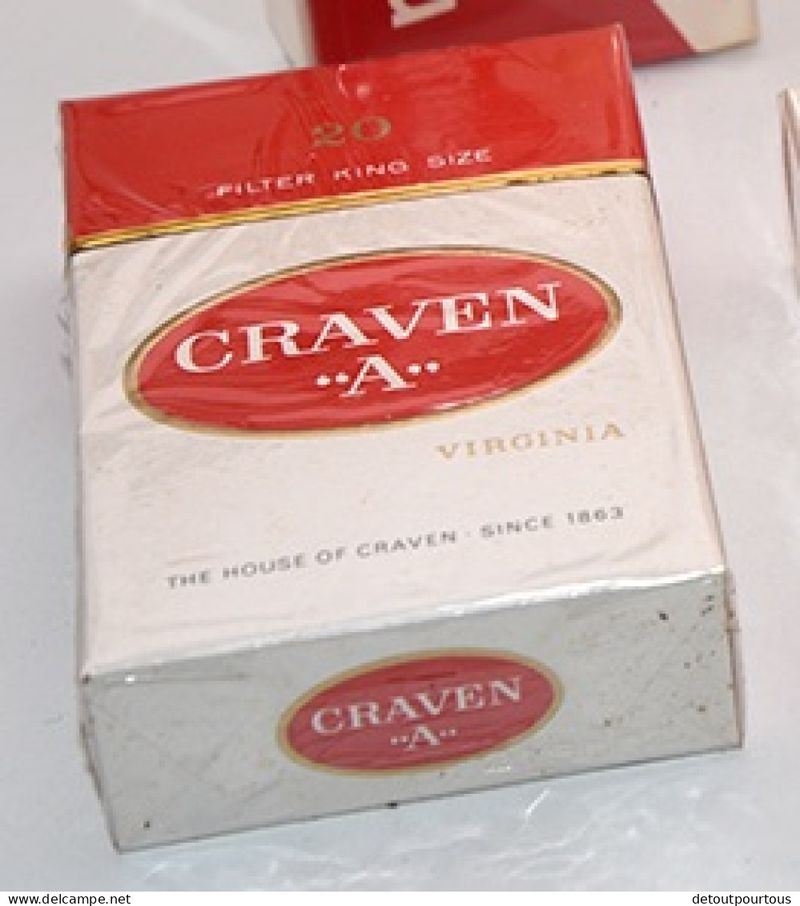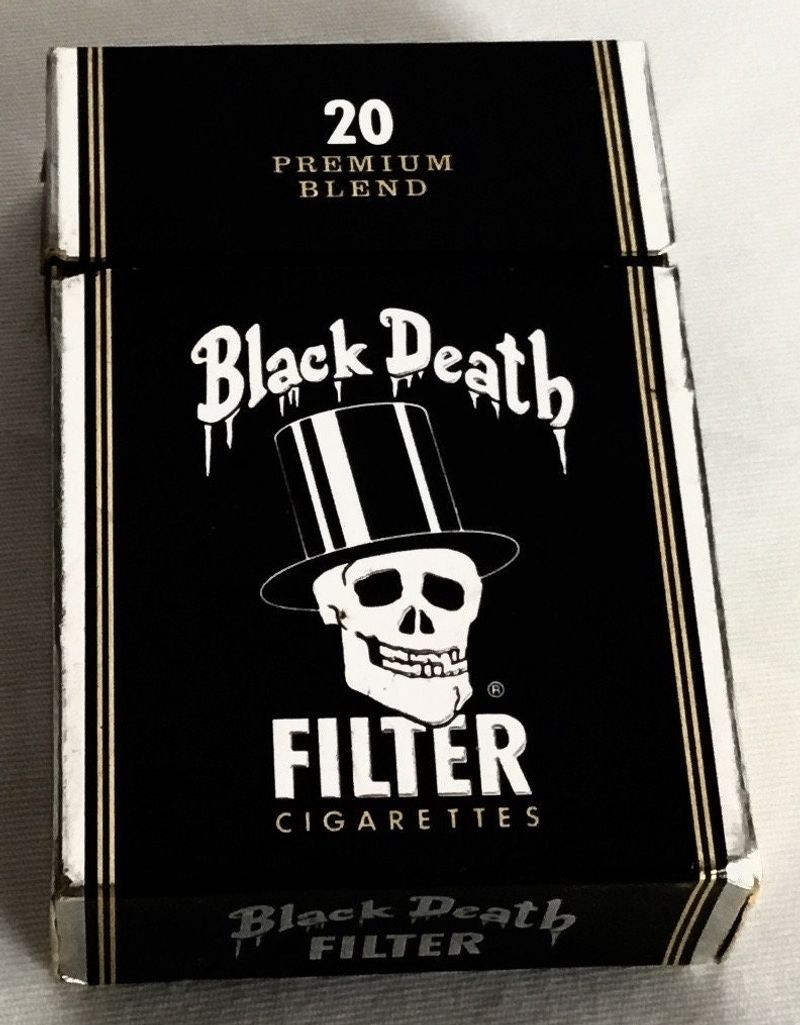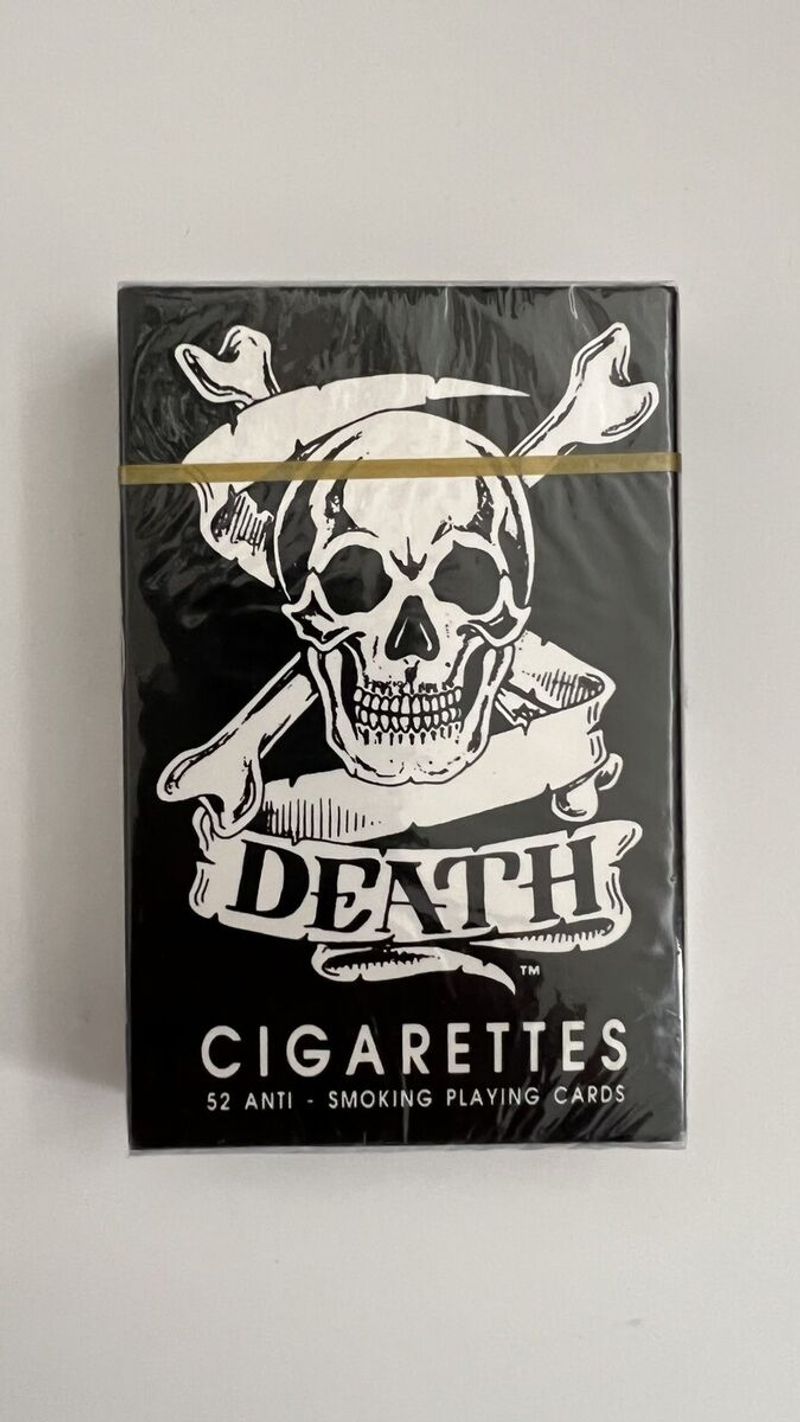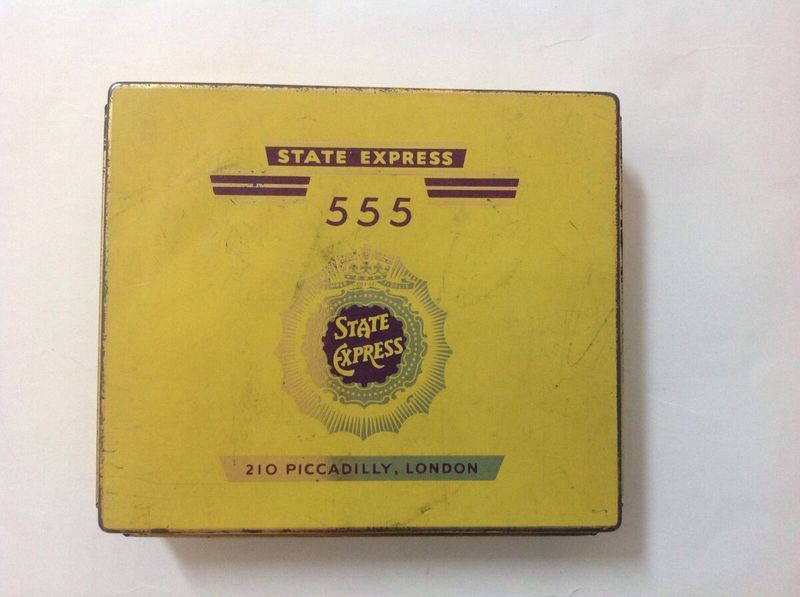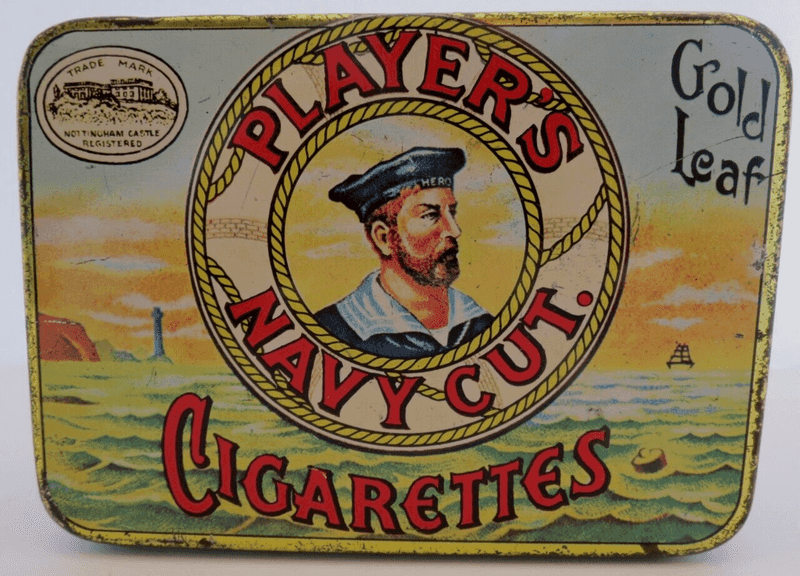Once upon a time, these cigarette brands were household names, gracing advertisements, and filling the shelves of corner stores. Today, they are echoes of a bygone era, remembered by a few and forgotten by many.
This list explores the histories and unique charm of 19 cigarette brands that once dominated the market but have since faded into obscurity.
Each brand carries its own story, reflecting cultural shifts, changing perceptions of smoking, and the ever-evolving market landscape. Let’s take a nostalgic journey through time to remember these once-popular cigarette brands.
1. Raleigh
Raleigh cigarettes thrived in an era when smoking was less about health and more about enjoyment. Known for their unique taste and high-quality tobacco, they quickly became favorites among consumers.
Raleigh offered a rewards program where smokers could collect coupons from packs and redeem them for various household items. This innovative marketing strategy was a hit, turning casual smokers into brand loyalists.
However, as smoking began to decline and health concerns rose, Raleigh’s allure faded. Their once-popular coupon program couldn’t keep pace with increasing regulations and changing consumer preferences. Raleigh cigarettes slowly disappeared from the market.
2. Viceroy
Viceroy cigarettes once captured the hearts of many with their distinctive V-shaped logo and smooth flavor. Launched in the 1930s, they made a name by being one of the first to include a filter.
This innovation aimed to appeal to the health-conscious smoker, setting Viceroy apart in a competitive market. Despite their initial success, other brands eventually overshadowed Viceroy as smoking trends shifted.
The brand struggled to maintain its relevance as the industry evolved. Today, Viceroy serves as a reminder of an era when filtered cigarettes were at the forefront of innovation, but it remains largely forgotten.
3. Tareyton
Tareyton cigarettes were synonymous with their catchy slogan, “I’d rather fight than switch.” This memorable catchphrase was part of a successful ad campaign in the 1960s and 70s.
Tareyton’s unique filter, known as the Dual Filter, promised a distinctive smoking experience. Despite its innovative approach, Tareyton couldn’t withstand the changing tides of public opinion on smoking.
As health warnings became louder and anti-smoking campaigns gained traction, Tareyton’s popularity waned. For a time, they represented the bold and the loyal, but as trends evolved, the brand slowly faded from the public’s consciousness, becoming a nostalgic relic.
4. Belair
Belair cigarettes brought a touch of sophistication to the smoking world. Known for their mild flavor and smooth draw, they captured the attention of those seeking a more refined smoking experience.
Belair’s branding tapped into the allure of elegance and class, often depicted with serene imagery in marketing campaigns. However, as the market shifted and health consciousness grew, Belair found it increasingly difficult to maintain its niche.
The once stylish and relaxed image couldn’t compete with new, bolder brands and shifting consumer priorities. Today, Belair is remembered by those who appreciated its gracefulness but is largely forgotten.
5. Old Gold
Old Gold cigarettes were a staple in American smoking culture, known for their classic gold and red packaging. Originating in the 1920s, Old Gold positioned themselves as the cigarette that had been cured, rather than raw.
This approach promised a smoother and more flavorful smoke, attracting a dedicated following. With witty advertising and sponsorships, they became a household name.
However, as the decades passed, Old Gold struggled to keep up with changing tastes and increased competition. Despite their efforts to innovate their image and product, the brand gradually lost its foothold, becoming a memory of the golden age of smoking.
6. Lark
Lark cigarettes emerged in the late 1950s, known for their bold red circle logo and innovative filter technology. They were among the first to offer a charcoal filter, promising a smoother smoking experience.
Lark’s unique selling point was its effort to reduce harshness and deliver a cleaner taste. Despite initial success and a dedicated following, Lark couldn’t withstand the shifting preferences towards healthier alternatives.
As awareness of smoking’s health risks grew, the charm of its innovative filters waned. While Lark remains a part of smoking history, it is largely forgotten in today’s market, remembered only by some.
7. Misty
Misty cigarettes capitalized on the trend for lighter, slimmer cigarettes during the 1980s. Marketed primarily towards women, they offered a milder flavor and an elegant design.
Misty’s marketing focused on themes of lightness and freshness, appealing to those seeking a less intense smoking experience. However, as awareness of health risks associated with smoking increased, even the lighter options faced scrutiny.
The trend towards quitting smoking entirely further diminished Misty’s market presence. Nowadays, Misty is remembered by a select few who favored its gentle approach but is largely a forgotten brand in the modern tobacco landscape.
8. Satin
Satin cigarettes offered a touch of luxury to the smoking experience. Known for their smooth flavor and premium branding, they catered to smokers seeking sophistication.
Satin’s marketing strategies emphasized luxury, often associating the brand with opulence and refinement. Despite their premium positioning, the brand struggled in an increasingly competitive market and with changing attitudes towards smoking.
As health awareness rose, the allure of luxury was not enough to sustain interest. Satin’s inability to adapt led to its decline, and today, it stands as a symbol of an era when smoking was intertwined with notions of luxury and exclusivity.
9. More
More cigarettes were synonymous with length and style. Known for their longer-than-average size, they appealed to smokers seeking an extended smoking experience.
More’s distinctive burgundy packaging and slim design set it apart from other brands, capturing the attention of those looking for something unique. Nevertheless, as the smoking landscape evolved, More struggled to maintain its niche.
Increased awareness of health risks and a shift towards quitting smoking affected its market standing. The brand’s appeal dwindled, and it gradually faded from view. More cigarettes now remain a relic of the past, cherished by those who enjoyed their distinctive style and length.
10. Doral
Doral cigarettes earned their place in the market with a focus on affordability and quality. Introduced in the 1960s, they quickly gained popularity for offering good taste at a lower price point.
Their marketing strategy emphasized value, making them a favorite among budget-conscious smokers. Despite their early success, Doral eventually faced challenges as the industry shifted towards premium and health-conscious options.
As public awareness of smoking’s risks grew, the cost-saving appeal of Doral couldn’t keep pace with changing preferences. Over time, the brand’s visibility decreased, and it now serves as a memory of an era focused on affordability.
11. Magna
Magna cigarettes were once known for their robust flavor and classic design. Positioned as a strong, full-bodied cigarette, they attracted those who appreciated depth in their smoking experience.
Magna’s marketing emphasized tradition and quality, resonating with a segment of dedicated smokers. However, as health trends intensified and competition increased, Magna struggled to maintain its market position.
The rise of lighter, health-conscious options and stricter regulations led to a decline in their popularity. Today, Magna cigarettes are mostly forgotten, symbolizing an era when robust flavor was a key selling point, now overshadowed by the demand for healthier alternatives.
12. Gitanes (Caporal)
Gitanes (Caporal) cigarettes, with their deep blue packs and iconic French art, captured the essence of French smoking culture. Known for their strong, distinct flavor, they were a favorite among those who appreciated robust taste and continental flair.
Gitanes were often associated with French cinema and bohemian lifestyles, lending them an air of artistic sophistication. However, as the global market shifted and health concerns rose, Gitanes struggled to maintain their allure.
The brand’s decline reflects a broader trend of moving away from strong flavors towards milder, filtered options. Gitanes now remain a cultural icon, but largely forgotten.
13. Gauloises (Caporal)
Gauloises (Caporal) cigarettes were an emblem of French tradition and strength, recognized by their iconic blue packets. Known for their intense, full-bodied flavor, they appealed to smokers who valued authenticity and depth.
Gauloises were more than just cigarettes; they were a cultural statement, often connected to French intellectual and artistic circles. Despite their storied history, Gauloises faced difficulties as global preferences shifted towards lighter options.
Health campaigns and evolving regulations accelerated their decline in popularity. Today, Gauloises are remembered as a symbol of a bygone era, cherished by those who once admired their boldness and character.
14. Benson & Hedges Menthol 100s
Benson & Hedges Menthol 100s brought a refreshing twist to the smoking experience with their cool menthol flavor. Known for their premium quality and elegant packaging, they appealed to smokers seeking sophistication with a minty edge.
Benson & Hedges’ marketing highlighted luxury and refinement, aligning the brand with elegance. However, as preferences shifted towards even milder alternatives and awareness of menthol’s effects grew, these cigarettes faced diminished demand.
The stringent regulations on menthol cigarettes further impacted their market presence. Although no longer in the spotlight, they are remembered for offering a distinct menthol experience wrapped in elegance.
15. Craven A
Craven A cigarettes were instantly recognizable by their classic red packaging and “Will Not Affect Your Throat” slogan. Known for their smooth taste, they developed a loyal consumer base over the decades.
Craven A positioned itself as a throat-friendly option, at a time when health concerns were less prominent. However, as scientific evidence mounted against smoking, Craven A’s branding could not withstand the pressure.
The rise of health-focused regulations and changing consumer awareness led to the brand’s decline. Today, Craven A is mostly a memory, symbolizing a period when marketing trumpeted throat safety amidst growing health concerns.
16. Black Death Cigarettes
Black Death Cigarettes stood out with their bold, provocative branding, featuring gothic designs and skull imagery. Their marketing embraced a rebellious image, resonating with those seeking a counter-culture statement.
Despite their striking appearance, Black Death faced challenges in an increasingly regulated market where health warnings became paramount. The brand’s edgy persona couldn’t shield it from the decline as smoking rates dropped and public scrutiny increased.
While it captured attention with its daring approach, Black Death is now mostly a memory, reflecting a time when cigarette branding pushed boundaries in the quest for visibility and differentiation.
17. Death Cigarettes
Death Cigarettes embraced their name with a straightforward, no-nonsense design featuring a skull and crossbones. Marketed as the “honest smoke,” they aimed to appeal to smokers with a rebellious streak.
Despite their bold branding, Death Cigarettes faced significant headwinds in a climate increasingly hostile to smoking. Health warnings and changing perceptions about smoking risks overshadowed their marketing gimmick.
The stark messaging, while unique, couldn’t compete with the industry’s push towards transparency and health consciousness. Death Cigarettes are now part of cigarette lore, remembered for their audacious attempt to flip the narrative amidst rising anti-smoking sentiments.
18. State Express 555
State Express 555 cigarettes, distinguished by their royal blue and gold packaging, represented a connection to British elegance and tradition. Known for their smooth, premium quality, they attracted a discerning clientele.
The brand’s association with motorsport sponsorships added to its allure, linking it to speed and sophistication. However, as smoking habits evolved and global regulations tightened, State Express 555 struggled to maintain its esteemed position.
The shift towards health consciousness and the decline in smoking’s social acceptability contributed to its fade from prominence. Today, it remains a part of smoking history, remembered by aficionados of classic, premium cigarettes.
19. Players Navy Cut
Players Navy Cut cigarettes were a staple for those seeking a robust, full-flavored experience. Known for their nautical-themed branding, they celebrated maritime heritage, appealing to those with a love for the sea.
Players Navy Cut gained a loyal following, especially among those who appreciated traditional smoking experiences. However, the brand faced challenges as the market shifted towards milder, filtered options.
Health campaigns and changing consumer preferences further accelerated their decline. Today, Players Navy Cut is a nostalgic memory, representing a time when tobacco brands leaned heavily on heritage and tradition to capture the imagination of smokers.
